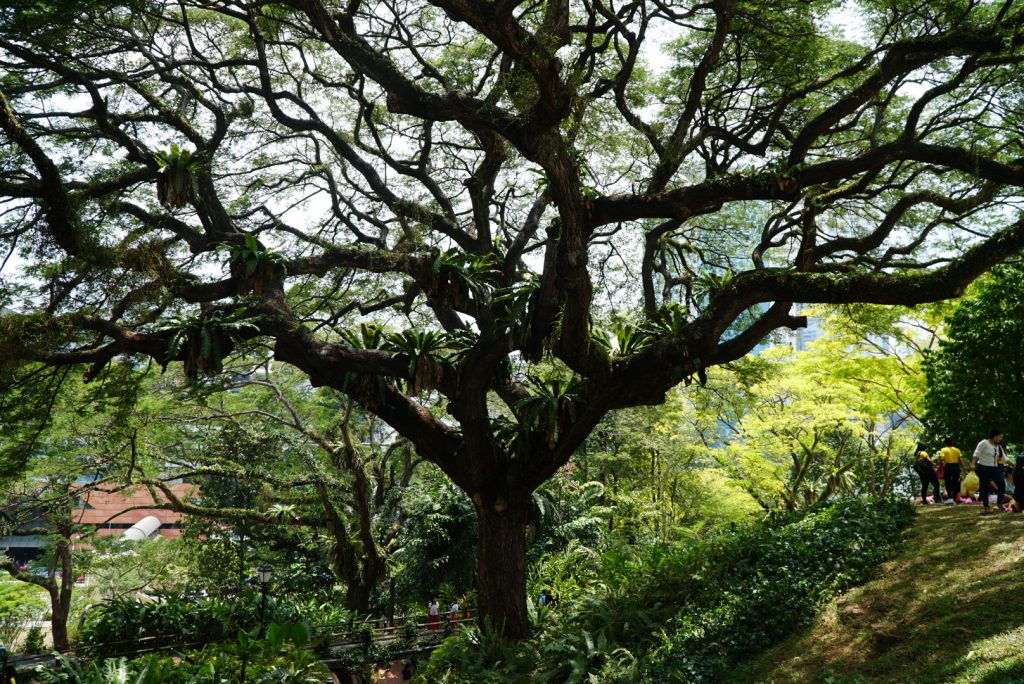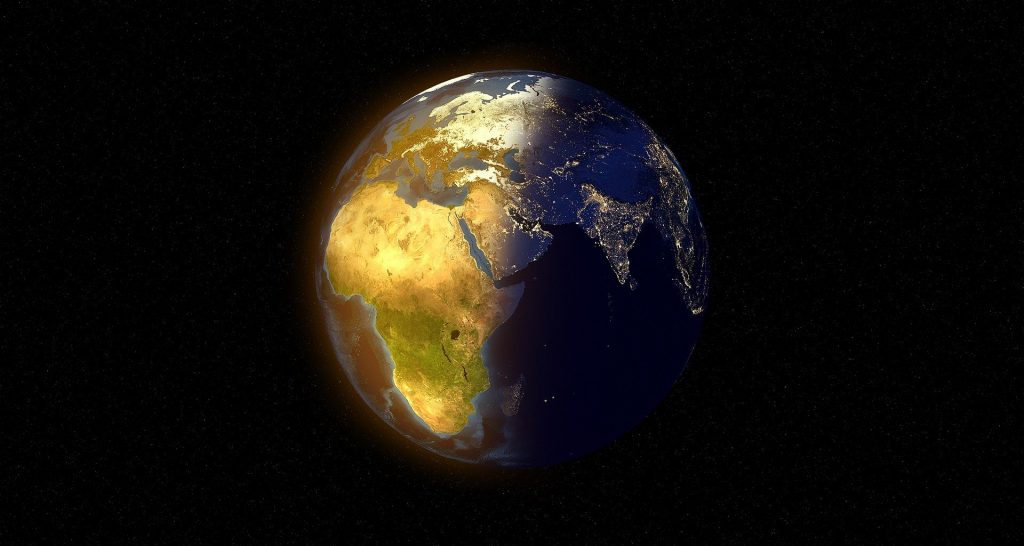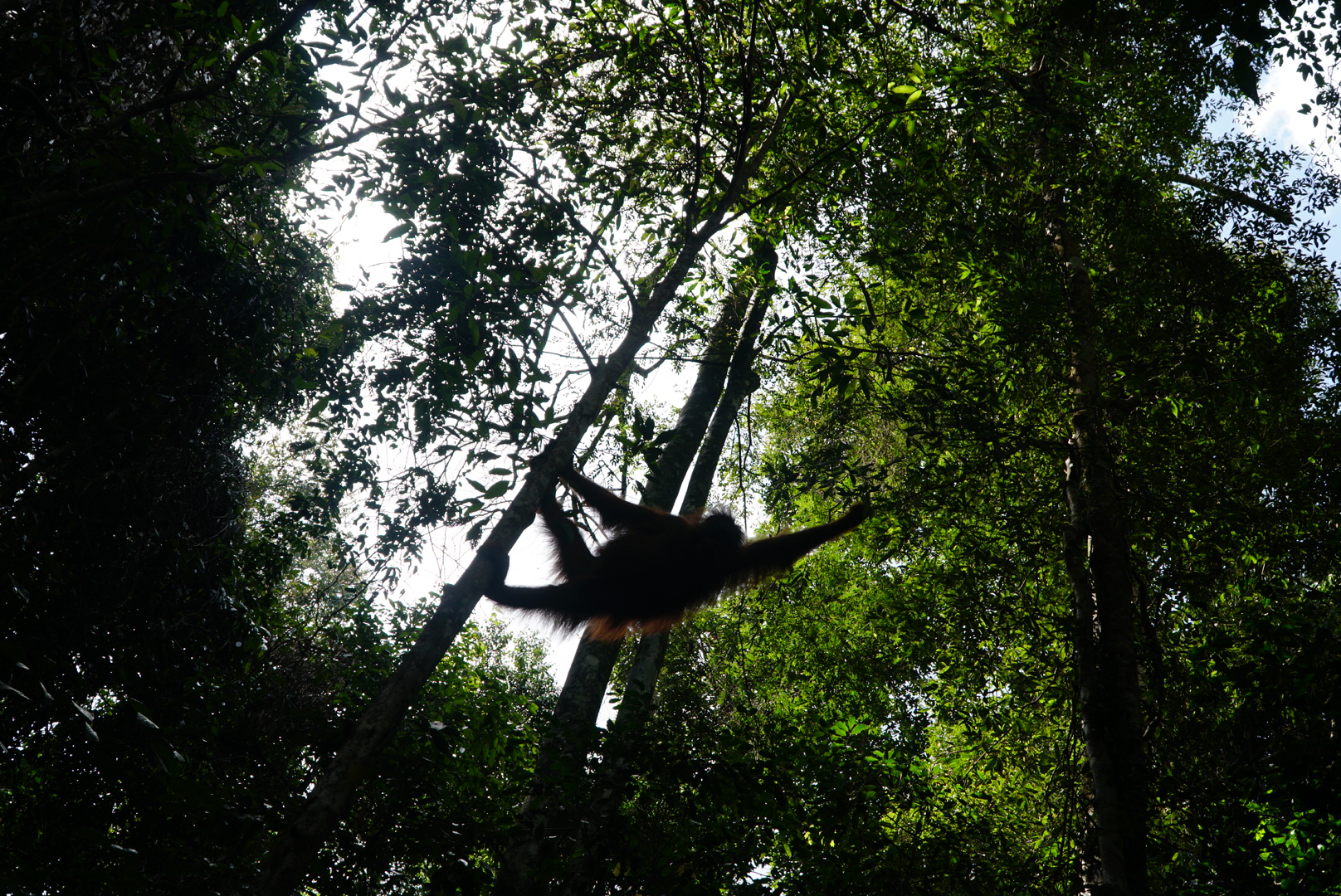The IUCN Urban Alliance is developing a new knowledge product, the Urban Nature Index, to help cities measure and track their ecological performance across three realms: urban, bioregional and global. In this blog, IUCN’s Russell Galt explores the ecological impacts of a city across each of these realms and the implications for conservation action.
A network of nodes
Cities are not isolated islands, sitting discretely in the biosphere. Rather, they are interconnected nodes with dynamic morphologies and metabolisms. They are open systems consuming resources, producing goods and services, and expelling waste and pollution. They are beacons of culture, projecting values and ideas that influence human behaviour and shape civilisation. In short, cities exert a profound influence on people and wildlife inhabiting ecosystems near and far, including distant urban ecosystems.
When examining the relationships between cities and the natural world, it may be helpful to do so in terms of three realms or spheres, namely urban, regional and global. Across each of these spheres, cities will have varying degrees of impact and influence. It follows that the available options for conservation action and their associated costs and benefits vary accordingly, with implications for the setting of science-based targets for nature. In the following subsections, these three spheres are each examined in turn.
Urban
Urban areas are characterised by high densities of residential and commercial buildings, sealed surfaces and people. Urbanisation brings about dramatic environmental changes pertaining to temperature, light, noise, traffic, predation, parasitism, competition, prey and substrate type. The IUCN Global Ecosystem Typology 2.0 describes urban and industrial ecosystems as “structurally complex and highly heterogeneous fine-scale spatial mosaics of diverse patch types…” Urban biota includes humans, their animals and cultivars, as well as opportunists, vagrants and legacy biota (whose presence predates urbanisation). Notwithstanding some notable exceptions, the biotic community structure of urban systems is typically low in functional and taxonomic diversity (Keith and Corlett, 2020). When compared with other terrestrial ecosystems, the energy, water and nutrient sources of urban systems are highly allochthonous (i.e., derived from far away).

Between 2000 and 2030, it is estimated that urbanisation will directly consume 290,000 km2 of natural habitat, particularly the tropical moist forest and temperate forest biomes of Africa and Asia (McDonald et al., 2018). Thus the boundaries of urban areas are dynamic and generally expanding outwards. For the purposes of setting, pursuing and tracking science-based targets for nature, it may therefore be pragmatic to work within local administrative boundaries which are relatively fixed.
Within such administrative boundaries, local governments can exercise direct influence over the planning, design, regulation and management of a range of public infrastructure, potentially including buildings, schools and spaces; residential and commercial developments; water, energy and transport networks; waste treatment and recycling facilities; parks and local nature reserves. To a lesser extent and perhaps indirectly, local governments may be able to influence private infrastructure, including businesses, buildings, sports facilities and gardens. There may, however, be aspects of a city over which the local government has limited or even negligible control e.g. informal settlements.
By taking conservation action in its ‘urban sphere’, a local government can unlock multiple co-benefits that can be readily enjoyed by citizens. Such co-benefits might include improved soundscapes, air quality, and aesthetic beauty, as well as the mitigation of flood risk, heat stress and storm surges. The potential for natural infrastructure to strengthen the liveability and resilience of urban areas is well-documented. The high visibility and tangibility of local conservation efforts and outcomes might also generate political rewards. Finally, by setting targets and taking action within its administrative boundaries, a local government may incur fewer intermediaries and lower administrative costs. This may serve to enhance accountability and heighten confidence in the achievement of desired conservation outcomes.
However, urban land tends to be hotly contested for a range of uses. Freeing up space for conservation action may therefore be relatively expensive with higher opportunity costs. Maintenance costs can also be high owing to the need to manage high levels of human disturbance. Moreover, the relatively small size of the urban area can limit conservation options.
Regional

A city’s bioregion is its immediate adjacent hinterland extending outwards to boundaries defined by characteristics of the natural environment e.g., watersheds. A bioregion could comprise a unique mix of protected and unprotected natural areas, arable and pastoral farmland, plantations, energy generation and transmission infrastructure, transport networks, and extractive operations. For some cities, the bioregion may comprise of other cities clustered together in a vast urban agglomeration. Thus, within and between bioregions, there may be considerable social, economic, and ecological variation.
Cities may source vital goods and services from the bioregion, including food, water, energy, raw materials and labour. In return, a city may supply the bioregion with infrastructure investment, tourism, waste, pollution and invasive alien species. Urban edge effects may include trampling, poaching, littering, arson and vandalism (McDonald et al., 2009). It has been estimated that by 2030, 40% of protected areas will lie within 50 km of a city (McDonald et al., 2018.
Cities with limited access to global markets, low purchasing power, and low or weakly enforced environmental standards (e.g., most cities of Sub-Saharan Africa), tend to exhibit high levels of dependency on their surrounding bioregions.
When a city harms its bioregion, the relationship can be described as ‘parasitic’ but when it invests in the conservation and restoration of the bioregion—for instance, through payments for ecosystem services schemes—a more balanced ‘symbiotic’ relationship can emerge. The establishment of water funds to finance the ecological restoration of catchments and thereby secure freshwater supplies for downstream settlements is a case in point. Examples include the Agua Tica – San José Water Fund, the Greater Cape Town Water Fund, and the Upper Tana – Nairobi Water Fund.
Indeed, there is much that a local government can do to limit harm to the bioregion. It can, for instance, exercise regulatory powers (standard-setting, monitoring and enforcement) to promote sustainable production and consumption; reduce waste and pollution in all its forms (e.g. light, water, air and noise); adopt green procurement policies; incentivize densification to curb urban sprawl; and compensate for unavoidable impacts through offsetting schemes. However, the power of a local government to directly influence and control human activities and ecological processes in the bioregion appears limited when compared to that which they exercise within their administrative boundaries.
Advantages of taking conservation action in the bioregion include: i) the realisation and direct enjoyment of co-benefits such as improved water supply and reduced flood risk; ii) increased availability of conservation options; iii) moderate to high visibility of conservation efforts; and iv) commensurate confidence in achieving desired outcomes. Given the proximity of the bioregion to the city and the likelihood that if falls within a similar, or at least familiar, legal regime, the ‘ease of doing business’ may also be an advantage. Moreover, lower market-based land values in the bioregion may reduce the costs, including opportunity costs, of conservation action.
It should be noted, however, that taking conservation action in the bioregion may necessitate working through intermediaries including neighbouring local or regional authorities, thus limiting the degree of control that can be directly exercised by the local government.
Global
Cities are centres of consumption and production. They account for 85% of global GDP generation, 60 to 80 % of the world’s energy consumption, 75 % of natural resource consumption, and 70 % of anthropogenic carbon dioxide emissions. They have ecological footprints that can be orders of magnitude larger than their physical area. Thus, while total urban land coverage is only 2-3 %, the full reach of cities—their demand for resources, discharge of waste, and disruption of ecosystems—extends to virtually every corner of the globe, even the remotest remnants of wilderness. Material consumption by cities expected to grow from 40 billion tonnes in 2010 to 90 billion tonnes by 2050, thereby compounding pressure on the natural world (IRP, 2018).

A small but committed group cities leading the climate agenda have begun attempting to account, for their ‘Scope 3’ emissions. Also known as ‘value chain’ emissions, these result from activities and assets not owned or controlled by the city in question e.g., the embodied carbon of imported foods.
The sheer extent, complexity and opacity of global supply chains make such holistic carbon accounting challenging. It follows that what is challenging to achieve with carbon—a single universal currency—is infinitely harder to achieve with biodiversity – the tangled web of life. This might explain why so few local governments have a handle on their tele-coupled or embodied biodiversity impacts.
Nevertheless, an absence of suitable metrics and methodologies, need not preclude effective conservation action by cities in the global realm. Indeed, local governments can adopt green procurement policies, divest pension funds from environmentally harmful industries, limit the discharge of waste and emission of mobile pollution, and offset carbon and biodiversity impacts. They can help to facilitate sustainable lifestyles and business practices, champion circular economic models, and incentivise resource-use efficiency. To a lesser extent, they can influence private consumption and production, and decide on the types of industries and businesses to attract and support. They can also engage in peer-to-peer learning and advocacy networks to contribute to global biodiversity research, testbed tools, pioneer best practice, and shift norms. So too, they can foster a culture of ecological literacy and environmental stewardship that may alter the way local businesses and citizens behave beyond city limits.
In choosing to take conservation action at a global scale, local governments can enjoy almost limitless conservation options including opportunities in extremely biodiverse areas where a given investment can generate high (conservation) returns on investment. Such global action may serve to enhance the international standing of the local government concerned.
There are, however, also pitfalls to this approach. Global conservation actions will have low visibility in the sponsoring city and will fail to generate the types of co-benefits that one might expect from local or regional interventions. The absence of such co-benefits may provoke taxpayers to ask questions about value for money. Acting globally will also entail working more intermediaries, potentially operating in entirely different or unfamiliar legal systems, creating additional complexity and opacity, whilst lowering confidence in the achievement desired conservation outcomes.
Sharpening focus
The relationship between cities and nature is complex, multidimensional and partly opaque. Where then should a local government focus its attention? With what criteria should it identify and prioritise targets and actions for nature? What level of analysis is necessary?
We do not yet have all the answers but through the development of the IUCN Urban Nature Index, we are learning rapidly. Soon, we shall be able to assist cities in evaluating their ecological performance, scoping options for conservation action, identifying trade-offs, and building an evidence base for making informed decisions.
Improving metrics and methodologies for measuring the ecological performance of cities will not suffice to solve all of our planetary woes. However, by enabling more meaningful comparisons over space and time, these efforts may at least serve to enhance transparency and accountability at the local level. By holding a mirror to local governments, the IUCN Urban Nature Index may help to foster the political and public commitment that is a prerequisite to effective and efficient conservation action.
References
IRP (2018). The Weight of Cities: Resource Requirements of Future Urbanization. Swilling, M., Hajer, M., Baynes, T., Bergesen, J., Labbé, F., Musango, J.K., Ramaswami, A., Robinson, B., Salat, S., Suh, S., Currie, P., Fang, A., Hanson, A. Kruit, K., Reiner, M., Smit, S., Tabory, S. A Report by the International Resource Panel. United Nations Environment Programme, Nairobi, Kenya.
Keith, D.A. and Corlett, R.T. (2020). T7.4 Urban and industrial ecosystems / T7 Intensive land-use biome. In: D.A. Keith, J.R. Ferrer-Paris, E. Nicholson and R.T. Kingsford (eds.) (2020). The IUCN Global Ecosystem Typology 2.0: Descriptive profiles for biomes and ecosystem functional groups. Gland, Switzerland: IUCN.
McDonald, R., Colbert, M., Hamann, M., Simkin, R., Walsh, B., Ascensão, F., Barton, M., Crossman, K., Edgecomb, M., Elmqvist, T., Gonzalez, A., Güneralp, B., Haase, D., Hillel, O., Huang, K., Maddox, D., Mansur, A., Paque, J., Pereira, H., Sharp, R. (2018). Nature in the Urban Century: A global assessment of where and how to conserve nature for biodiversity and human wellbeing. Arlington, VA: The Nature Conservancy Available at: https://www.nature.org/content/dam/tnc/nature/en/documents/TNC_NatureintheUrbanCentury_FullReport.pdf
McDonald, R.I., Forman, R.T.T., Kareiva, P., Neugarten, R., Salzer, D. and Fisher, J. (2009). ‘Urban effects, distance, and protected areas in an urbanizing world’. Landscape and Urban Planning 93(1): 63–75. Available at: https://doi.org/10.1016/j.landurbplan.2009.06.002
